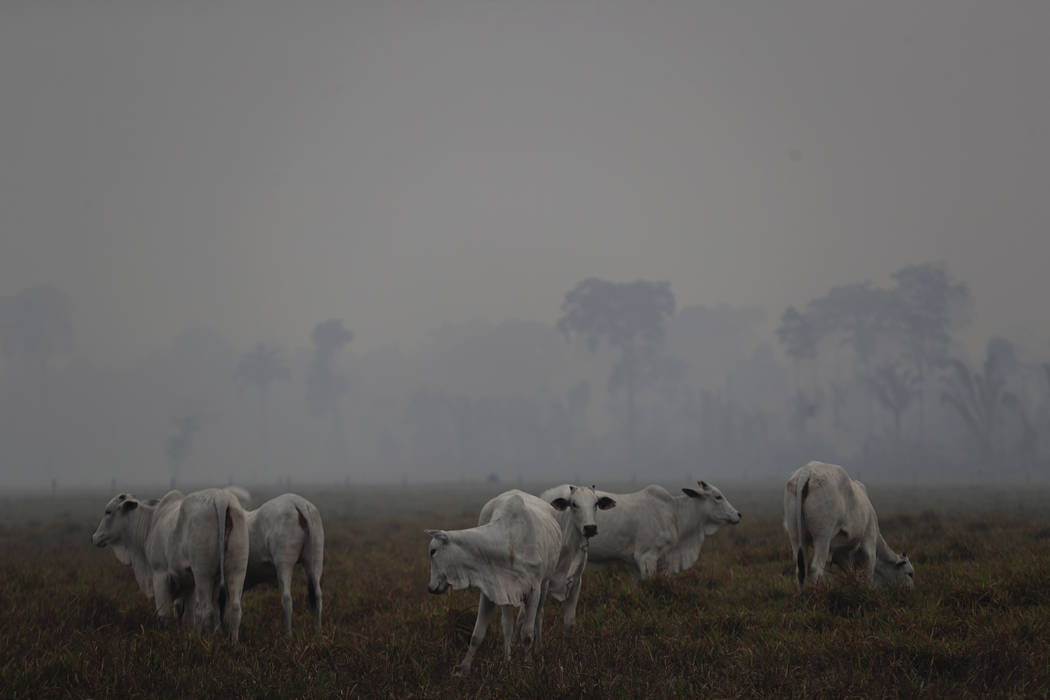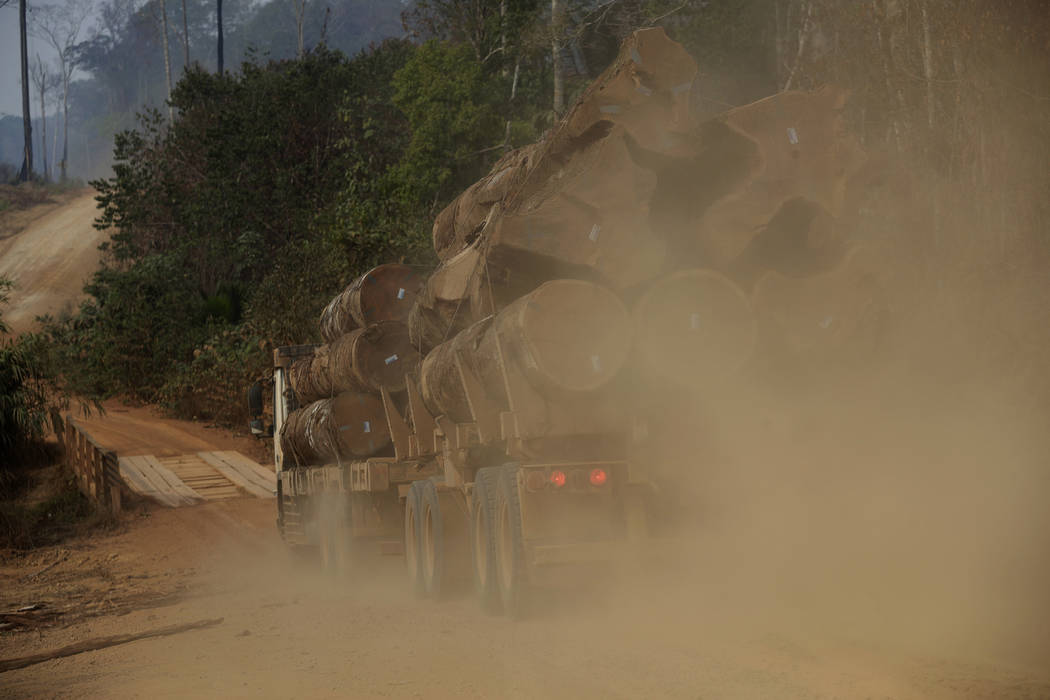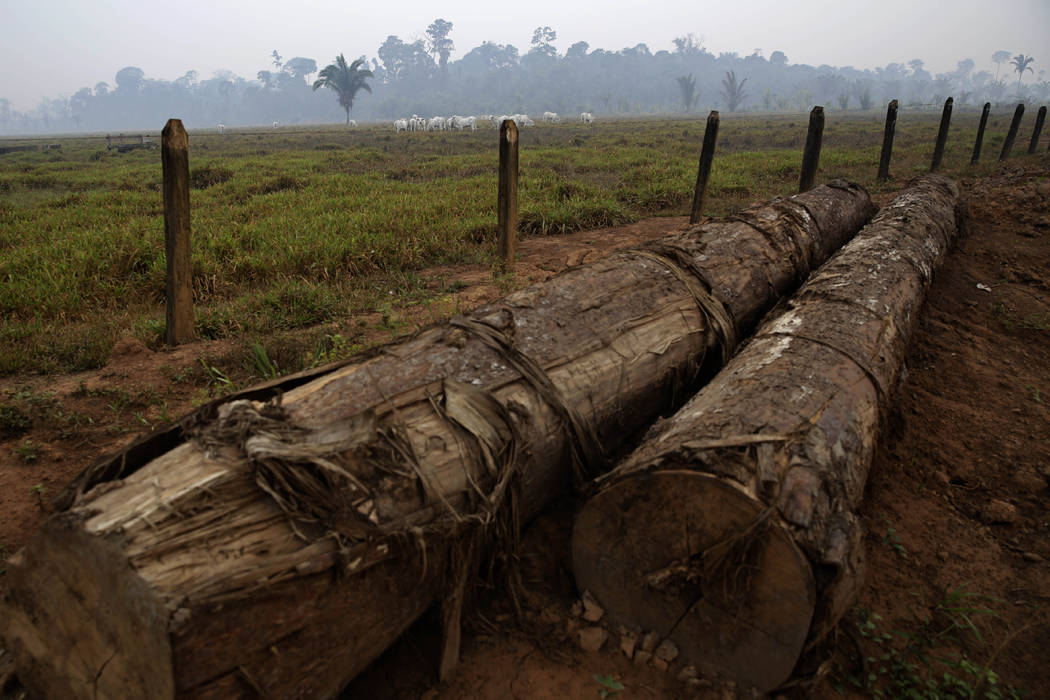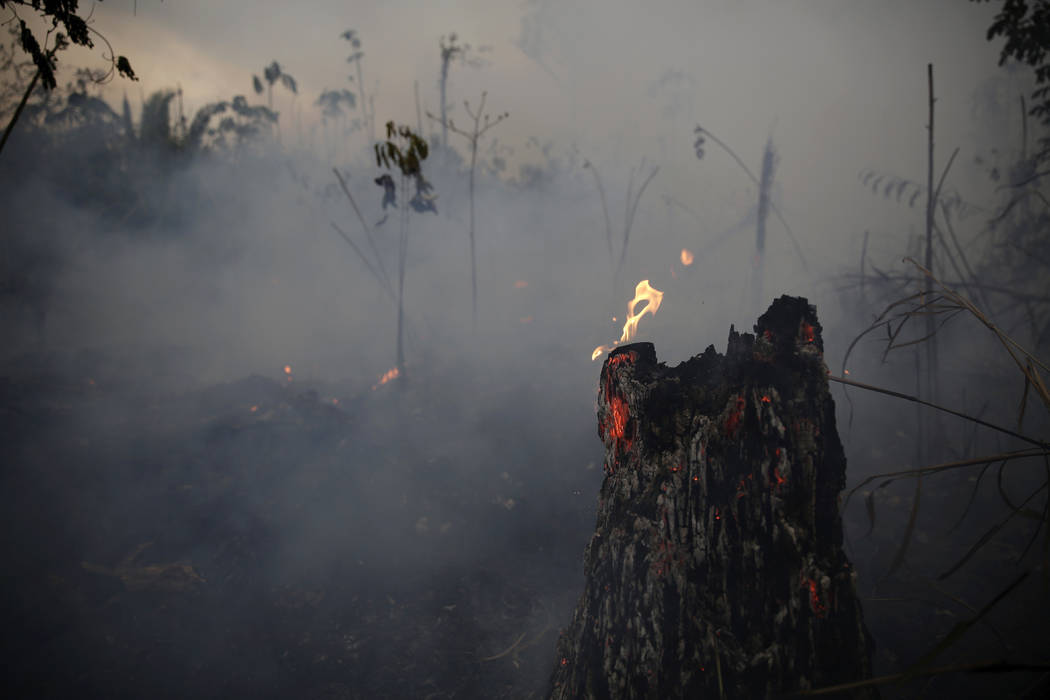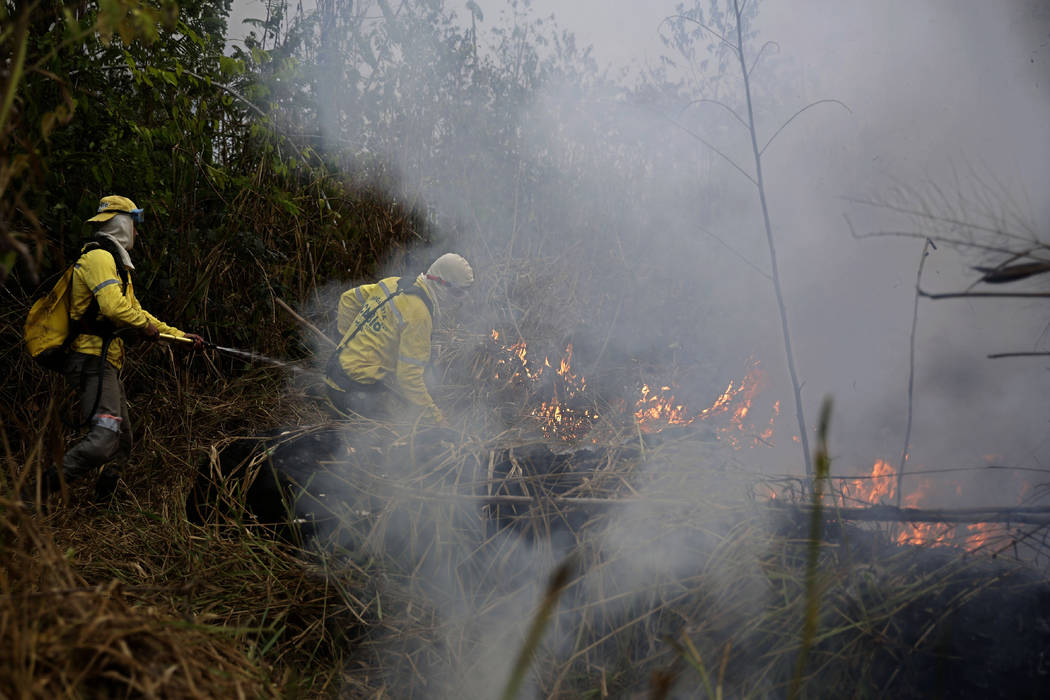Brazilian firefighters toil in Amazon region hazy with smoke
JACUNDA NATIONAL FOREST, Brazil — Equipped with hoses connected to rubber backpacks, Brazilian firefighters in the Amazon on Monday raced in a truck along dirt roads toward plumes of smoke after a spotter in a military helicopter directed them to a fast-spreading fire.
A landowner opened the gate of a barbed wire fence and the firefighters set to work, dousing a conflagration they believed was intentionally set to prepare land for crops or pasture. When their water supply ran out, they made a fire break, clearing brush with machetes and chainsaws to starve the blaze of its fuel.
The smoke-shrouded scene near the lush Jacunda national forest in the Amazonian state of Rondonia, witnessed by an Associated Press team, showed the enormity of the challenge ahead: putting out a multitude of blazes and safeguarding — in the long term — a vast region described by world leaders as critical to the health of the planet.
The country’s National Space Research Institute, which monitors deforestation, has recorded that the number of fires has risen by 85% to more than 77,000 in the last year, a record since the institute began keeping track in 2013. About half of the fires have been in the Amazon region, with many in just the past month.
At a summit in France, the Group of Seven nations pledged $20 million on Monday to help fight the flames in the Amazon and protect the rainforest, in addition to a separate $12 million from Britain and $11 million from Canada.
The international pledges came despite tensions between European countries and Brazilian President Jair Bolsonaro, who has accused rich countries of treating the region like a “colony” and suggested the West is angling to exploit Brazil’s natural resources.
But the funds, which are widely seen as critical support, are still a relatively meager amount for dealing with an environmental crisis that threatens what French President Emmanuel Macron has called “the lungs of the planet.”
The AP team drove for hours at a stretch outside the Rondonia capital of Porto Velho without seeing any major fires, suggesting that many had been extinguished or burned themselves out since rapidly spreading in recent weeks. Many fires were set in already deforested areas to clear land for farming and livestock.
Still, smoke billowed from charred fields and scrub, shrouding the sky. The airport in Porto Velho closed for more than one hour on Monday morning because of poor visibility caused by the haze.
Under international pressure to act, Bolsonaro said he might visit the Amazon region this week to check on firefighting efforts and would make 44,000 troops available to fight the blazes. However, the military presence in the area seemed scarce on Monday, with only a few soldiers seen patrolling roads and lending a hand.
At dawn, the blazing sun was hidden under thick smoke that blanketed the horizon like fog. Trucks carrying fresh timber sped through a road that cut through lands where heaps of ash were piled around charred logs.
Some local residents seemed torn between knowing that the fires were devastating the environment around them, and needing to extract the Amazon’s rich natural resources to make a living.
“We have to preserve the land. The government has to help small farmers more, prioritize and take care of the large reserves, where people do most of the illegal things,” said Willian Sabara Dos Santos, a farm manager. Behind him, a Brazilian flag on a pole fluttered in the wind next to a statue of a bull that he said was a replica of the iconic “Charging Bull” sculpture on New York’s Wall Street.
In a nearby village, Darcy Rodrigo De Souza walked barefoot into a shop where people drank coffee and ate Pao de Queijo, traditional Brazilian cheese bread, on a street named “New Progress.”
“We have many problems with the fires. But we also depend on the wood for our economy. If it wasn’t for that, there would be nothing,” said De Souza, who wore a straw hat. “It’s true that the Amazon has to be protected, but this president is going to protect it. The Americans want us to protect Brazil. But why don’t they protect their stuff?”
About 60% of the Amazon region is in Brazil; although the vast forest also spans parts of Bolivia, Colombia, Venezuela, Ecuador, French Guiana, Guyana, Peru and Suriname. The Amazon’s rainforests are a major absorber of carbon dioxide from the atmosphere and described by environmentalists as a critical defense against climate change.
On Monday, army Maj. Fabio da Paixão Pinheiro said officials have determined that the fires around Porto Velho have decreased as a result of rains over the last couple of days.
But near the Jacunda national forest, thunder boomed as firefighters worked to suffocate flames that continued to burn into the evening.
One fireman prayed for rain as he put on a protective mask. All around him, the heavy smell of burning wood permeated the air, making it hard to breathe.
Associated Press writer Luis Andres Henao reported from Jacunda National Forest and AP writer Christopher Torchia reported from Rio de Janeiro.



